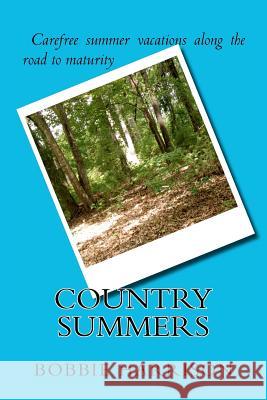Country Summers » książka
Country Summers
ISBN-13: 9781470058074 / Angielski / Miękka / 2012 / 562 str.
Carefree summer vacations, nostalgically sweet songs of that summer's hit parade, the joy and sting of first love, each forms building blocks of our cherished memories. Times in our hearts before the stresses of adult responsibilities, times of learning and times of moving on to the next level of growth, all of these move us along the road to maturity. Country Summers, a work of fiction, follows a young girl, her friends and family seen through the lens of their summer vacations in Monroe, New York. Starting in an apartment on the Grand Concourse in the Bronx, New York in 1954, Laurel Milton grows from ages twelve to eighteen. She and her summer crowd of friends experiment with romance, understanding their parents, religion, social etiquette, and solve a mystery involving the early history of the region. Highlights from the story include: * Uncovering the details of a deadly traffic accident * The ritual of the "Mock Marriage" * The Sadie Hawkins Dance * Dating rules of the mid-nineteen fifties * Social norms of in-groups and out-groups * Festivals and Sabbath traditions of the Hebrew religion * A mysterious farm family with a futuristic lifestyle KIRKUS BOOK REVIEW BOOK REVIEW A fictionalized memoir of idyllic teenage summers in Monroe, NY, during the 1950s. Apple Hill, a country bungalow community on a lake, attracted families from New York City who wanted to escape apartment living in the summer. The mothers kept house, gardened, cooked and played mah jongg and canasta while the fathers commuted to the city. The teenagers worked at summer jobs as camp counselors, mechanics and reporters. Social activity centered on the club house, where adults enjoyed Saturday-night dancing and entertainment, and teens had parent-approved weekly themed dances. Some of the teens, though, had other private parties, usually in a local basement that offered "make-out music" and games such as "post office and spin the bottle." Laurel, the most prominent character in this book, led the members of the younger set as they occupied themselves with gossip, dramas of love and romance, listening in on party-line conversations and prying into the affairs of others. Visitors to Apple Hill observed Jewish holidays and religious traditions in the club house, which became a "rustic synagogue." This ambitious memoir, upbeat and respectful, takes the form of a series of sketches of the lives of the summer families as well as prominent non-Jewish local residents and how they overlapped.
Zawartość książki może nie spełniać oczekiwań – reklamacje nie obejmują treści, która mogła nie być redakcyjnie ani merytorycznie opracowana.











